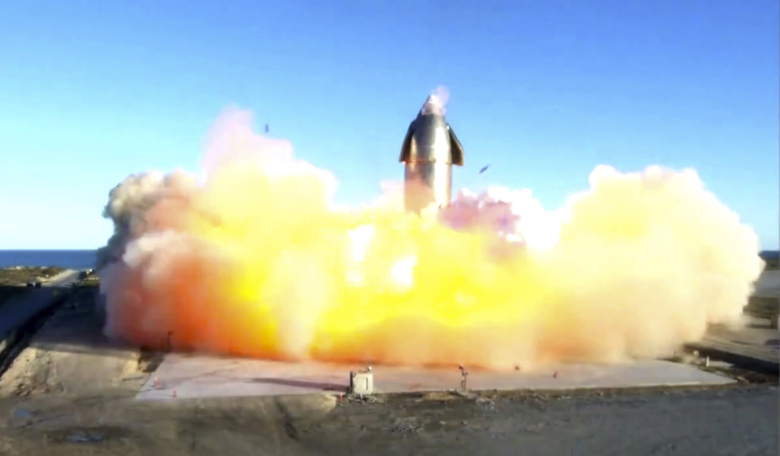A Wednesday test flight of SpaceX's prototype SN8 rocket ended disastrously when a momentary engine malfunction caused the rocket to plummet into the ground and explode.
It was the highest and most elaborate flight yet for the rocketship that Elon Musk says could carry people to Mars in as little as six years.
"This suborbital flight is designed to test a number of objectives, from how the vehicle's three Raptor engines perform to the overall aerodynamic entry capabilities of the vehicle (including its body flaps) to how the vehicle manages propellant transition. SN8 will also attempt to perform a landing flip maneuver, which would be a first for a vehicle of this size," SpaceX said in statement on its website prior to the test.
This latest prototype—the first one equipped with a nose cone, body flaps and three engines—was shooting for an altitude of up to eight miles (12.5 kilometers). That's almost 100 times higher than previous hops and skimming the stratosphere.
Earlier this year, SN5 and SN6 prototypes of the Starship rocket carried out short 500-foot test flights, but Wednesday's test was intended to reach 41,000 feet in altitude.
However, it was also intended to rotate and land upright, in the same position it as it took off. While it rotated, the rocket engine seemed to momentarily be interrupted, causing the rocket to come down much less gently than intended, and it slammed into the ground, exploding in a huge fireball.
For what it's worth, SpaceX founder Elon Musk didn't put much faith in the test, either.
"Lot of things need to go right, so maybe 1/3 chance" of success, Musk tweeted last month in response to a question about the test. "But that's why we have SN 9 and SN10" rockets, he added.
Musk seemed positive after Wednesday's crash, too.
"Successful ascent, switchover to header tanks and precise flap control to landing point!" he tweeted shortly after the explosion. "Fuel header tank pressure was low during landing burn, causing touchdown velocity to be high and RUD, but we got all the data we needed! Congrats SpaceX team hell yeah!!"











